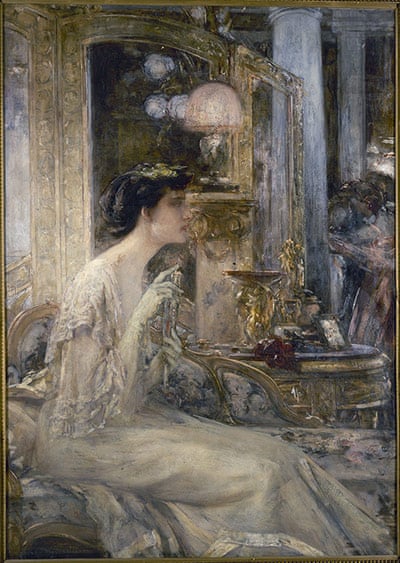Pollution, economic woes, political uncertainty and a crisis of confidence have cast a smoggy grey cloud over Paris, like the rest of France, of late. But it was not always this way.
An exhibition that opened this week has served as a timely and contrasting reminder to pessimistic Parisians of the former glory of their capital. The event, Paris 1900, is being staged at the Petit Palais, a magnificent, often overlooked, palace on the right bank of the Seine, and shows the City of Light at its brightest during the period known as La Belle Époque.
At the start of the 20th century the eyes of the world were on the French capital. The Universal Exhibition, for which the Petit Palais and its even more impressive neighbour, the Grand Palais, were built, made the city a showcase for the world.
Cézanne, Monet, Renoir, Pissarro and Toulouse-Lautrec, among many others, experimented with symbolism, and what would become recognised as the Impressionist movement. Grand stations like the Gare d'Orsay – works of art in their own right – were being built, while Fulgence Bienvenüe, the "Father of the Métro", was overseeing his first underground line.

Arts of all disciplines and sciences flourished. Travel and adventure were opening up swaths of the southern hemisphere, which were often quickly colonised. Absinthe was driving artists mad, mind-altering drugs were taken, poverty and prostitution were given the oil painter's gloss.
But it was to be a brief supernova before the horrors of the first world war brought darkness and slaughter to the continent.
Strolling through the exhibition's six "pavilions" at the recently renovated Petit Palais, it is clear the outward-looking, imaginative and self-assured Paris of 1900 is a world away from today's city, battered and bruised by a global economic recession and erring towards gloom.
"Paris in 1900 was enjoying a period of great joy, of huge optimism," said Christophe Leribault, recently appointed director of the Petit Palais, who gathered the 600 exhibits in 12 months.
"It was a time of cultural abundance, of arts, of science, of invention, of colonisation of parts of the world by France, Britain and Belgium. This exhibition is a celebration of that time and highlights the mythical nature of Paris and La Belle Époque.

"It is this image of Paris, with all its attractions, the beaux arts, the artistic salons, right down to the prostitutes and bordellos, that we wanted to celebrate."
He added: "Looking back there were of course signs of trouble, but nobody then could have guessed the horrors of war that were to come. Parisians were optimistic, confident, discovering things, looking forward."
The optimism of La Belle Époque did not last. Today, France is battling to keep its reputation as the centre of the civilised, cultured world, but a walk around its capital shows how much of its former glory shines on.
The exhibition at the Petit Palais, built for the 1900 universal exhibition and named Musée des Beaux-arts in 1902, will run until 7 August.
http://www.theguardian.com/artanddesign/2014/apr/03/paris-1900-exhibition-le-petit-palais

Poster of the Universal Exhibition Palais de l'Optique
1900
Musée Carnavalet/Roger-Viollet











